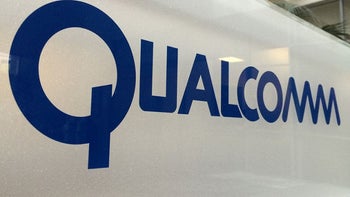Qualcomm simulates real world use of 5G to come up with some insights

To help it better understand what wireless operators and users of 5G and Gigabit LTE devices will experience once the next generation of wireless service is introduced, Qualcomm has been running simulations of real world 5G use. Two different simulations were run by the chipmaker; one modeled an NSA 5G NR (New Radio) in Frankfurt running 100MHz of 3.5GHz spectrum working with a Gigabit LTE network operating across 5 LTE bands.
The second simulation modeled an NSA 5G NR (New Radio) 5G in San Francisco running on 800MHz of 28 GHz mmWave spectrum, with an underlying Gigabit LTE network operating across 4 licensed LTE spectrum bands plus License Assisted Access (LAA) bands. The results of both simulations showed increases in network capacity, which is a boon for carriers. But we bet you're more interested in what the simulation showed consumers can expect from 5G. According to Qualcomm, the San Francisco simulation revealed:
- Browsing download speeds increasing from 56 Mbps for the median 4G user to more than 490 Mbps for the median 5G user, a gain of approximately 900 percent.
- Approximately 7x faster responsiveness, with median browsing download latency reduced from 116ms to 17ms.
- File download speeds of 100 Mbps for the 10th percentile 5G user, meaning that 90 percent of 5G users have download speeds of more than 100 Mbps. This is compared to 8 Mbps for the 10th percentile LTE user.
- Median streaming video quality increasing from 2K/30 FPS/8-bit color for LTE users to 8K/120 FPS/10-bit color and beyond for 5G users.
As for the simulation in Frankfurt, those results revealed:
- Browsing download speeds increasing from 71 Mbps for the median 4G user to 1.4 Gbps for the median 5G user in mmWave coverage, a gain of approximately 2000 percent.
- Approximately 23x faster responsiveness, with median browsing download latency reduced from 115ms to 4.9ms.
- File download speeds of more than 186 Mbps for 90 percent of 5G users, compared to 10 Mbps for LTE, a 1,826 percent gain. The median 5G file download speed was 442 Mbps.
- Median streaming video quality increasing from 2K/30 FPS/8-bit color for LTE users to 8K/120 FPS/10-bit color and beyond for 5G users.
"There is a lot of interest from various stakeholders in the mobile ecosystem – cloud platform providers, application developers, device OEMs, and others – in understanding the real-world performance that 5G NR mobile networks and devices will deliver. We undertook this comprehensive study to help the ecosystem prepare for the foray into 5G, so that application developers, for example, can begin planning new experiences and services for users with 5G devices."-Alex Holcman, senior vice president of engineering, Qualcomm Technologies, Inc.
The simulations revealed that the capacity increases inherent in 5G technology will enable carriers to offer more services in addition to the usual browsing, streaming and downloading. Qualcomm has a big role in the next generation of wireless with 18 wireless operators and 20 device makers planning on using the the Qualcomm Snapdragon X50 5G modem.
source: Qualcomm










Things that are NOT allowed: